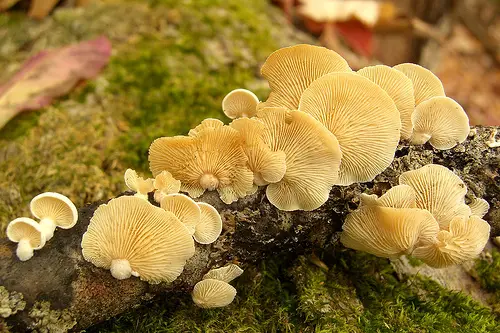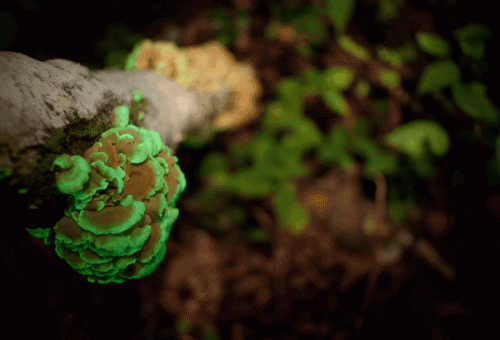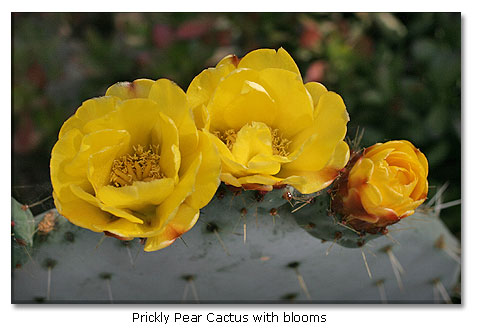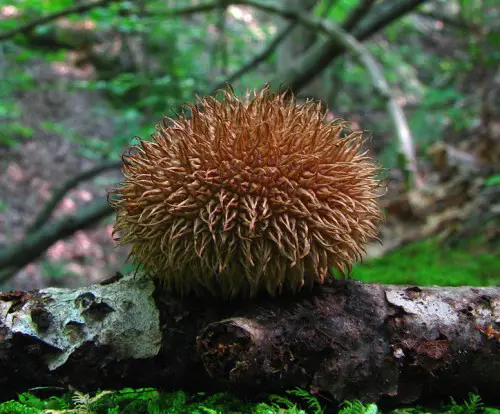Bitter Oyster
Also known as the luminescent panellus, stiptic fungus, or the astringent panus, the bitter oyster is a type of fungus. It was first scientifically describe by Jean Bulliard in 1783, who originally called it the Agaricus stypicus. It was only in 1879 that it was given its current scientific name, Panellus stipticus.
The bitter oyster is usually unseen by the human eye as it usually inhabits rotting wood in suitable temperatures. The bitter oyster fungus is found commonly all around the world, including Asia, Europe, Australasia, and North America. It commonly grows in groups in dense areas. These include logs, stumps, and trunks of deciduous trees such as birch, oak, and beech.
Its cap is kidney-shaped, can can be either roughly flat to convex shaped. It is usually about 1.2 – 3.2 cm x 1.2 to 2.5 cm. The edges of the mushroom cap are small rounded teeth and are curved inwards. The surface of the cap is dry, although there are some patterns on it that almost look like dried mud. Other than this, the surface has small fine hairs that look almost like wool and provides it with a woolly texture. Fresh mushrooms are either yellow-orange, cinnamon, or buff. When they are dried, the bitter oyster is clay, brown, or tan. However, when the mushroom is moistened, the faded colours will revive again.
Underneath the cap are gills which are close together. It is buff coloured, and has many cross-veins that interconnect with each other. The stem is between 0.6 – 1.2 cm tall, and less than 1 cm thick. Its stem is a dull-white, and it is covered with rather minute fibres.
This fungi species is one of several species that are bioluminescent, hence its name, the luminescent panellus. Strains of the bitter oyster especially from eastern North America are usually bioluminescent. However, bitter oysters from everywhere else are not luminescent. The luminescence is is found at the edge of its gills, as well as the junction between the gills, stem, and cap. Scientific analysis has discovered what may be responsible for its luminescence. It is thought that it is controlled by a dominant allele, so modern research is currently researching whether the bitter oyster can be used in bioremediation as it can detoxify some environmental pollutants.
As this fungi is small, it is too small and too bitter tasting to be edible. Its taste can be describied as acidic, astringent, or acrid. However, a study in 1992 reported that the taste of the mushrooms varied between the geographic range. Bitter oysters from eastern North America are mildly acrid and cause drying up in the mouth. Those from Russia, New Zealand, and Japan did not have any sensation in the mouth but did feel a nauseating taste as well as constriction in the throat. In Traditional Chinese Medicine, the bitter oystesr is used as a styptic to staunch bleeding, and is known as a purgative.





I would talk broader if I were you but still very good
Interesting article. Wish there were sources listed.